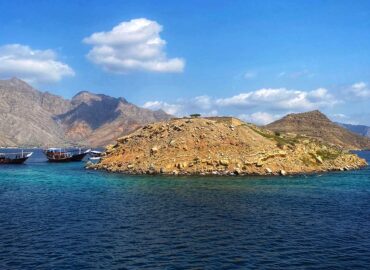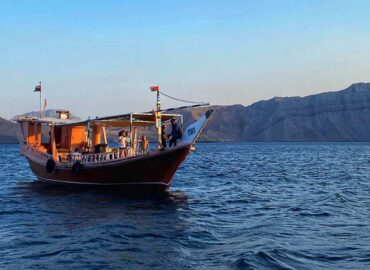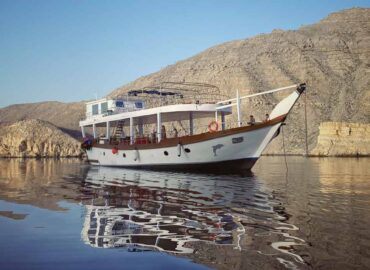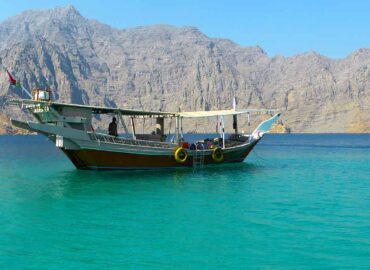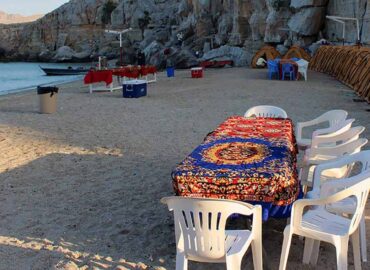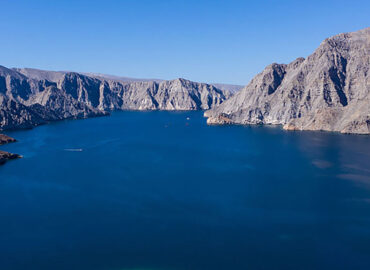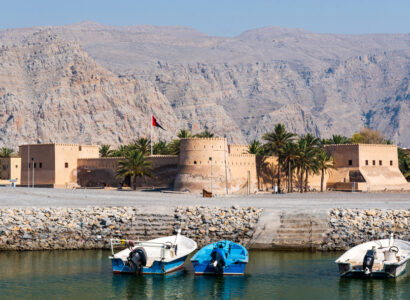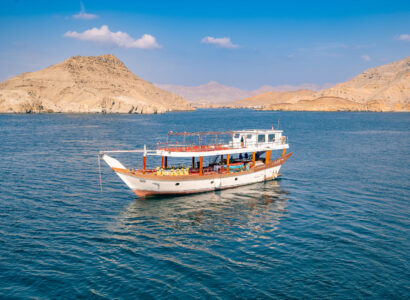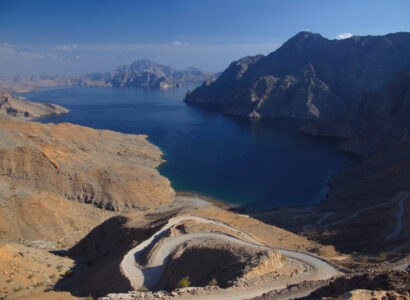Oman: History, Culture, and More
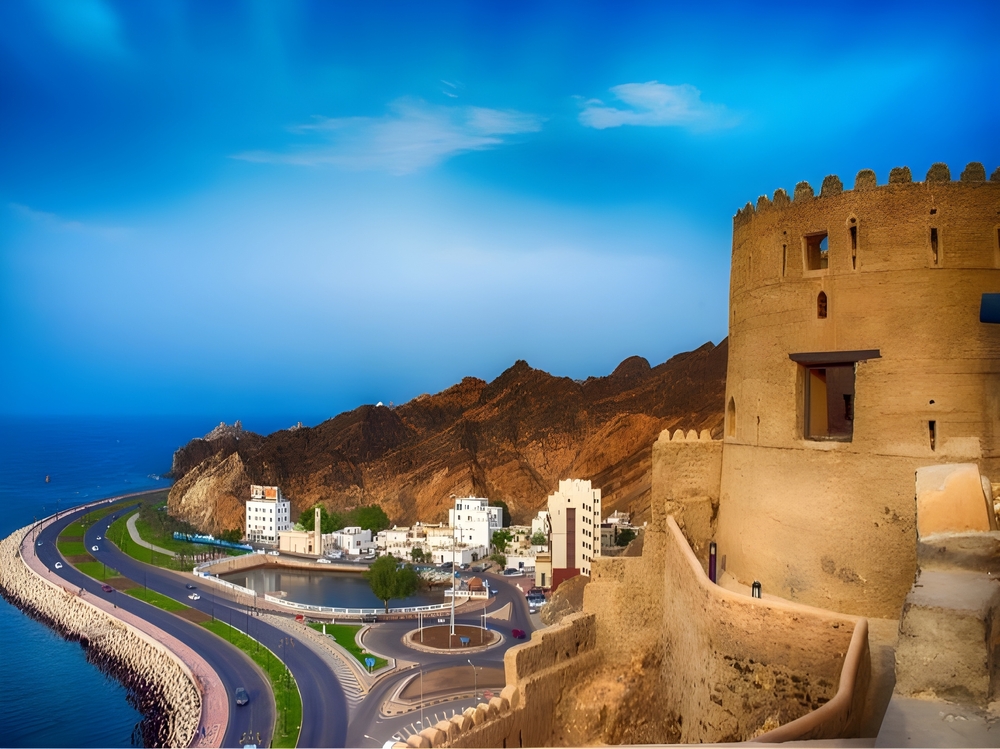
History, Culture, and More – Exploring the Heart of the Arabian Peninsula
Oman, officially known as the Sultanate of Oman, is a country positioned on the southeastern coast of the Arabian Peninsula, within the regions of West Asia and the Middle East. It shares its land borders with three neighboring nations: Saudi Arabia to the west, the United Arab Emirates to the northwest, and Yemen to the southwest.
Oman’s coastline spans the Arabian Sea to its southeast and the Gulf of Oman to the northeast. The country also includes the exclaves of Madha and Musandam, both of which are encircled by the United Arab Emirates. Musandam’s coastal boundaries face the strategic Strait of Hormuz and the Gulf of Oman. The capital and largest city is Muscat. Oman has an estimated population of around 5.46 million and a total land area of 309,500 square kilometers, or approximately 119,500 square miles, placing it as the 123rd most populous nation globally.
Starting in the 18th century, the Sultanate of Oman rose to become an imperial force, competing for control and influence in the Persian Gulf and the Indian Ocean with colonial empires such as Portugal and Britain. By the height of its expansion in the 19th century, Oman’s imperial reach extended across the Strait of Hormuz into parts of present-day Iran and Pakistan, and as far south as the island of Zanzibar off East Africa. During the 20th century, Oman came increasingly under British influence.
The long-standing diplomatic relationship between Oman and Britain, which spanned over three centuries, was grounded in shared strategic and commercial interests. The British valued Oman’s geographic position as a crucial maritime hub, which helped safeguard British sea trade routes through the Persian Gulf and Indian Ocean and played a vital role in protecting British colonial interests in the Indian subcontinent. Oman stands out in the Arab world as the oldest state to have continuously maintained its independence.
Oman ranks 22nd in the world for proven oil reserves. In 2010, the United Nations Development Programme identified Oman as the most improved country globally in terms of human development over the preceding four decades. While the country’s economy relies heavily on oil and natural gas, it also benefits from sectors such as tourism and the trade of fish, dates, and other agricultural goods. The World Bank categorizes Oman as a high-income economy. As of 2024, Oman is listed as the 37th most peaceful country worldwide according to the Global Peace Index.
Oman operates as an absolute monarchy, in which the Sultan holds full executive authority, and leadership succession is passed down through the male line. Sultan Qaboos bin Said reigned from 1970 until his death on January 10, 2020. As he did not have children, Sultan Qaboos had written a letter designating his cousin, Haitham bin Tariq, as his successor. After Qaboos’s passing, the royal family opened the letter and confirmed Haitham as the new Sultan of Oman. Oman is a member state of numerous international and regional bodies, including the United Nations, the Arab League, the Gulf Cooperation Council, the Non-Aligned Movement, and the Organisation of Islamic Cooperation.
Etymology
The earliest recorded mention of the name “Oman” appears on a tomb discovered at the Mleiha Archaeological Center, located in what is now the United Arab Emirates. The term “Oman” is believed to predate classical references such as those by Pliny the Elder, who wrote of “Omana,” and the geographer Ptolemy, who referred to “Omanon” in Greek, written as Ὄμανον ἐμπόριον. These references are widely thought to denote the ancient city of Sohar, which played a prominent role in regional trade and settlement history.
In Arabic, the name “Oman” is commonly understood to derive from the terms ʿāmin or ʿamūn, meaning ‘settled people’, distinguishing these communities from the nomadic Bedouins of the desert. Alternative theories suggest that the name originates from an eponymous ancestor—candidates include Oman bin Ibrahim al-Khalil, Oman bin Siba’ bin Yaghthan bin Ibrahim, or Oman bin Qahtan. Other hypotheses argue that the name refers to a valley located in Ma’rib, Yemen, believed to be the original homeland of the Azd tribe. This tribe, noted in ancient inscriptions—particularly Sabaic inscriptions dating back to the reign of Sha’r Awtar (210–230 CE)—is considered one of the primary ancestral groups that migrated into Oman.
Throughout its extensive history, Oman has been referred to by several names, each reflecting a different era or cultural context. The names “Majan” and the “Sultanate of Oman” are among the most recognized. These names are tied to specific stages of Oman’s development, both civilizational and geographical. In ancient times, the region referred to as Amman (or Oman) was distinguished by its relatively abundant water sources compared to surrounding Arab territories. The term “Mazoun” is thought to originate from “Al-Mazen,” which signifies clouds heavy with rain, possibly explaining why agriculture flourished early on in this region. This abundance of water likely contributed to the rise of early civilizations and agricultural settlements in Oman. During the Middle Ages, the term “Oman” was applied broadly to cover the eastern part of the Arabian Peninsula, extending from eastern Qatar to the coast of the Indian Ocean. However, from the 18th century onward, this designation became geographically restricted to the southeastern part of the Arabian Peninsula, which today comprises the modern-day Sultanate of Oman and the Mahaden coast.
History
Prehistory and Ancient History
The archaeological sites of Bat, Al-Khutm, and Al-Ayn, located in the Ad Dhahirah region and dating back to the 3rd millennium BCE, are recognized as UNESCO World Heritage Sites. These locations demonstrate the deep historical roots of civilization in Oman, showcasing monumental tombs and structures that reflect early architectural and societal complexity.
In 2011, more than 100 stone tool scatters were discovered at Aybut Al Auwal in Oman’s Dhofar Governorate. These tools are associated with the late Nubian Complex, a distinctive African lithic industry previously known only in northeastern and Horn of Africa regions. Optical dating of the site estimates it to be about 106,000 years old, supporting theories that humans migrated from Africa into Arabia during the Late Pleistocene.
Recent archaeological surveys have identified Paleolithic and Neolithic settlements along Oman’s eastern coast. Notable Paleolithic sites include Saiwan-Ghunaim in Barr al-Hikman. In the Bronze Age, the Umm an-Nar and Wadi Suq cultures left behind numerous artifacts such as wheel-made pottery, hand-crafted stone vessels, and evidence of metal industries at sites like Bat, Al-Janah, and Al-Ayn, accompanied by significant architectural remnants.
Historical sources largely agree that frankincense trade began around 1500 BCE. This ancient trade is exemplified by the Land of Frankincense, now a UNESCO World Heritage Site, which serves as evidence of South Arabian civilizations’ commercial and cultural achievements through this prized commodity.
In the 8th century BCE, the region was believed to be governed by the Yaarub tribe, descendants of Qahtan. Among them, Wathil bin Himyar ruled over Oman, extending influence from Yemen. It is widely believed that the Yaarubah were among the first Yemeni tribes to settle in Oman.
During the 1970s and 1980s, scholars such as John C. Wilkinson proposed, based on oral traditions, that the Achaemenid Empire exercised control over parts of Oman during the 6th century BCE. Their administration likely operated from coastal centers like Suhar. In central Oman, an indigenous culture known as the Samad Late Iron Age emerged. The Recent Pre-Islamic Period, beginning in the 3rd century BCE and lasting to the 3rd century CE, flourished particularly in the northern region. While some argue that Persian rulers dominated southeastern Arabia, the absence of Persian archaeological evidence challenges this claim. Nonetheless, it is suggested that Shammir bin Wathil bin Himyar acknowledged Cyrus the Great’s rule over Oman in 536 BCE.
Ancient Sumerian records referred to Oman as “Magan”, and in Akkadian as “Makan”, names historically tied to Oman’s significance as a copper-exporting region, a major resource of the time.
Azd Tribal Migration
Over the course of several centuries, various Arab tribes from the western part of the Arabian Peninsula migrated and settled in Oman. These groups engaged in diverse livelihoods including fishing, agriculture, herding, and livestock breeding. Many contemporary Omani families trace their ancestry to these early Arab migrants. The migration occurred in waves, originating from both northwestern and southwestern Arabia, with the new settlers often having to compete with the local populations for the most fertile and productive land.
When these Arab tribes moved into Oman, they could generally be categorized into two primary groups. One group, part of the Azd tribal confederation, migrated from Yemen around 120 to 200 CE, particularly following the collapse of the Marib Dam, which prompted large-scale movements. The other group, originating from the Nejd region in what is now modern-day Saudi Arabia, moved to Oman several centuries before the rise of Islam and was known as the Nizari branch. Some historians argue that an earlier tribal group known as the Yaarubah, descending from Qahtan, had already settled in Oman prior to the Azd, forming one of the oldest known Yemeni tribal presences in the region.
The Azd community that established itself in Oman came to be known specifically as the “Al-Azd of Oman,” and they descended from Nasr bin Azd. About seventy years after the first Azd migration, another significant group led by Malik bin Fahm, a prominent figure who previously founded the Kingdom of the Tanukhids near the Euphrates, is believed to have journeyed to and settled in Oman. According to the genealogist Al-Kalbi, Malik bin Fahm is credited as the primary leader who brought the Al-Azd to Oman. Tradition holds that he initially settled in the coastal town of Qalhat.
Malik bin Fahm is said to have led an army of over 6,000 men and horses in a confrontation against the Marzban, a governor who served under a vaguely identified Persian king. This conflict culminated in the Battle of Salut, where Malik’s forces ultimately defeated the Persians. However, these accounts are semi-legendary, as they appear to condense multiple generations of migrations and conflicts into a single narrative. They also blend different oral traditions from the migrating Arab tribes and the original inhabitants of the region.
By the 7th century CE, the people of Oman came into contact with Islam. According to Islamic tradition, the introduction of Islam to Oman is attributed to Amr ibn al-As, who was sent by the Prophet Muhammad during the expedition led by Zaid ibn Haritha to the region of Hisma. Amr was tasked with reaching out to Jaifer and Abd, the sons of Julanda who were the rulers of Oman at that time. The historical accounts suggest that these rulers readily embraced Islam upon receiving the message, marking the beginning of the Islamic era in Oman.
Imamate of Oman
During the Umayyad period, Omani tribes of the Azd confederation frequently traveled to Basra for trade, which was a flourishing center of Islamic learning and commerce. These Omani merchants and tribesmen established a permanent presence in Basra, where they were allocated their own quarter to accommodate their social and economic activities. Many of these Omani settlers rose to become prosperous merchants, and under the leadership of al-Muhallab ibn Abi Sufra, they began expanding their influence eastward into regions such as Khorasan.
The religious doctrine of Ibadism, which would later become central to Omani identity, was founded in Basra by Abd Allah ibn Ibad around the year 650. This school of Islamic thought emphasized a moderate, tolerant, and rational interpretation of Islam. The Omani Azd who had settled in Iraq embraced Ibadism as their dominant religious belief. Eventually, tensions between the Ibadis and the Umayyad authorities escalated, particularly under the governorship of al-Hajjaj ibn Yusuf, who opposed the Ibadi movement. These tensions led to the expulsion of many Ibadis from Basra, prompting their return to Oman.
Among those who returned was Jaber bin Zaid, a renowned Ibadi scholar. His presence in Oman greatly strengthened the intellectual and theological foundation of the Ibadi movement. Around the same time, al-Hajjaj attempted to assert control over Oman, which was then ruled by the brothers Suleiman and Said, sons of Abbad bin Julanda. To this end, he dispatched a military commander named Mujjaah bin Shiwah to subdue the region.
Mujjaah first clashed with Said bin Abbad in a fierce confrontation that devastated Said’s forces. Following their defeat, Said and his followers retreated to the rugged terrain of the Jebel Akhdar mountain range. Mujjaah pursued them, eventually driving them from their hiding places in Wadi Mastall. He then advanced toward the coastal areas and engaged in battle with Suleiman bin Abbad. Suleiman’s forces successfully repelled Mujjaah’s attack. However, al-Hajjaj sent another commander, Abdulrahman bin Suleiman, who finally managed to secure victory and bring Oman under the governance of the Umayyad administration.
Shortly after the decline of the Umayyad Dynasty around 750–755 CE, the first elected Ibadi Imamate was established in Oman. Some scholars state that Janah bin Ibadah Al-Hinnawi was chosen as the first Imam during this transformative period. Others argue that Janah served as a wali, or governor, during the Umayyad era, and that the true first Imam was Julanda bin Masud, who was formally elected in 751 CE.
The Ibadi Imamate achieved its greatest influence during the 9th century CE. During this golden period, the Imamate built a strong maritime presence and controlled trade across the Persian Gulf. Oman developed commercial ties with the Abbasid Caliphate, East Africa, and the Far East, making it a major economic power in the region. However, internal disputes and succession conflicts began to weaken the authority of the Imams.
In addition to these internal issues, the growing influence of the Abbasids and later the rise of the Seljuk Empire added external pressures. These developments gradually undermined the strength and independence of the Ibadi Imamate, leading to a decline in its regional influence.
Nabhani Dynasty
During the 11th and 12th centuries, the coastal areas of Oman came under the influence of the Seljuk Empire, which expanded its reach across much of the Islamic world. This dominance continued until 1154, when the local Nabhani dynasty rose to power and successfully expelled the Seljuks from Omani territory. Once in control, the Nabhanis established their rule, not as Imams in the religious Ibadi tradition, but as muluk, or kings, asserting political authority over the country. In doing so, the role of the Ibadi Imams became largely ceremonial and lost its former influence over governance.
The Nabhanis chose Bahla as their capital, a town that would become a significant political and cultural center during their reign. From there, the dynasty extended its influence over vital trade routes, particularly those connected to the frankincense trade. The Banu Nabhan were especially dominant along the overland path stretching from Sohar to the oasis of Yabrin, and further to major cities like Bahrain, Baghdad, and Damascus. Their control over these routes allowed them to generate wealth and secure Oman’s role in the international trade of incense and other goods.
During the Nabhani era, Oman experienced a number of notable cultural and agricultural introductions. One such example is the mango tree, which was introduced to Oman by a figure known as ElFellah bin Muhsin. This agricultural innovation, along with other advancements, supported a relatively stable economy under the Nabhanis.
However, the strength of the Nabhani dynasty began to deteriorate in the early 16th century. In 1507, Portuguese colonial forces captured the coastal city of Muscat and started extending their control both northwards to Sohar and southwards to Sur. This Portuguese incursion marked the beginning of European imperial ambitions in Oman and signaled a weakening of indigenous dynastic authority.
Some historians argue that the end of the Nabhani rule occurred even earlier, around 1435, when internal conflicts between the dynasty and rival tribal factions such as the Al Hinawis led to the collapse of their political power. This unrest enabled the re-emergence of the elective Ibadi Imamate, marking a return to religiously based leadership in parts of Oman’s interior. Despite the uncertainty surrounding the exact end date of their rule, the Nabhanis left a lasting imprint on Oman’s political history, architecture, and trade networks.
Portuguese Era
The Portuguese arrived on the coasts of Oman in the early 16th century, a decade after Vasco da Gama successfully navigated around the Cape of Good Hope to reach India in 1497–1498. In 1507, they seized control of Muscat, marking the beginning of a 143-year occupation of key coastal regions of Oman. Their main objective was to secure a strategic outpost that would protect Portuguese sea lanes across the Indian Ocean and safeguard their trade empire. To reinforce their presence, the Portuguese fortified Muscat extensively, and several remnants of this architectural influence are still visible today.
During the early part of their rule, the Portuguese expanded their presence further along the coast, gradually colonizing more Omani cities. These efforts were part of a broader strategy to dominate trade routes and control access to the Persian Gulf. To solidify this strategy, the Portuguese established a network of fortresses stretching from Basra in modern-day Iraq to Hormuz Island, effectively turning Oman into a critical node in their maritime empire.
However, their grip on the region was challenged in 1552, when an Ottoman fleet launched an assault on Muscat. The Ottomans briefly captured the city’s fort, aiming to contest Portuguese influence in the Persian Gulf and Indian Ocean. Although their occupation was short-lived, they destroyed parts of the fortress and surrounding areas before retreating, underscoring the strategic importance of Muscat in regional power struggles.
Later in the 17th century, Oman became the staging ground for one of the largest naval engagements ever fought in the Persian Gulf. The Portuguese navy, operating from its bases in Oman, clashed with a combined fleet from the Dutch East India Company and the English East India Company, both of whom were supported by the Safavid Empire of Persia. Although the battle ended in a stalemate, it severely undermined Portuguese dominance in the region and marked the beginning of their decline in the Gulf.
By the mid-1600s, this weakening control paved the way for a resurgence of local Omani power, culminating in the eventual expulsion of the Portuguese and the rise of the Yaruba dynasty, which would go on to transform Oman into a regional maritime power in its own right.
Yaruba Dynasty (1624–1744)
The decline of Portuguese control in the 17th century allowed the Omanis to reassert their independence and rise as a significant maritime force. The unification of Oman under indigenous leadership began with the election of Nasir bin Murshid as the first Imam of the Yaruba dynasty in 1624, in the city of Rustaq. His election marked the beginning of a new era in Omani history, one that was focused on internal consolidation and the expulsion of foreign occupiers.
Imam Nasir and his successors launched a series of successful campaigns against the Portuguese, gradually driving them out of their coastal strongholds in Oman. By the 1650s, the Omanis had managed to completely remove Portuguese forces from their territory. This achievement did not just restore national sovereignty but also marked the start of a powerful maritime empire that expanded Oman’s influence well beyond the Arabian Peninsula.
The Yaruba rulers extended Omani dominance to East Africa, where they captured key Portuguese settlements along the Swahili Coast. Their greatest military success in this region came in 1698, when Imam Saif bin Sultan led a siege against Fort Jesus in Mombasa, a major Portuguese bastion. After a prolonged struggle lasting two years, the fort fell, and the Omanis took control of Mombasa. That same year, Saif bin Sultan also managed to seize Bahrain, further expanding Oman’s territorial reach.
At its height, the Yaruba dynasty transformed Oman into a formidable sea power that rivaled European colonial empires. However, this golden age began to unravel following the death of Imam Sultan bin Saif II in 1718. A succession crisis ensued, leading to intense internal rivalries within the ruling family. This discord weakened the central authority and created opportunities for foreign intervention.
Amid the growing instability, Imam Saif bin Sultan II found himself unable to maintain control. In a desperate move to secure his position, he invited Nader Shah of Persia to intervene on his behalf against rival claimants. This invitation proved disastrous. A Persian military force arrived in Oman in 1737 and initially assisted Saif, but they eventually turned against him. Operating from their base at Julfar, the Persians began to assert control over parts of the coast, threatening the sovereignty of Oman itself.
The Persian occupation continued into the 1740s and signaled the end of the Yaruba dynasty. The once-mighty maritime empire fractured under both internal strife and foreign encroachment, paving the way for the rise of the Al Said dynasty, which would emerge as the new ruling power in Oman by the mid-18th century.
18th and 19th Centuries
After the successful expulsion of Persian forces, Ahmed bin Said Al Busaidi emerged as a unifying leader and was elected as Imam of Oman on 20 November 1744. The city of Rustaq served as the capital during this formative phase. Though the Imamate retained its elective principle, preference was increasingly shown to members of the Al Busaidi family, provided the candidate met the required qualifications. This laid the foundation for dynastic rule in Oman.
Following the death of Ahmed bin Said in 1783, his son Said bin Ahmed succeeded him as Imam. However, real power quickly shifted. Said’s son, Hamed bin Said, overthrew his father’s authority in Muscat and claimed the fortress, thereby exercising control as a secular ruler with the title “Seyyid.” Eventually, Seyyid Sultan bin Ahmed, Hamed’s uncle, consolidated control. He was followed by his son, Said bin Sultan, who became one of Oman’s most notable rulers.
During this period, Oman experienced moments of dual authority, as Imam Said bin Ahmed maintained the religious title until his death in 1803, while political leadership shifted toward the secular sultans. A later exception to dynastic rule was Azzan bin Qais, who became Imam in 1868 through election. However, his anti-British stance caused concern in London. This led to British support for his cousin, Sayyid Turki, a son of the late Said bin Sultan and brother to Sultan Barghash of Zanzibar, who ultimately deposed Azzan in 1871.
Another legacy of Said bin Sultan’s rule was Oman’s overseas holdings. Among these was Gwadar, a coastal enclave located in modern-day Pakistan. Although Oman lost much of its maritime empire over time, the Sultan retained sovereignty over Gwadar until its eventual transfer to Pakistan in the mid-20th century.
The 18th and 19th centuries were marked by British expansion in the region. As Britain pursued imperial dominance over southeast Arabia, it sought to limit the power of European rivals and suppress Oman’s rising naval presence. The British East India Company and Omani rulers began formalizing relations, starting with a treaty in 1798 signed by Sultan bin Ahmed. This agreement aimed to block French and Dutch ambitions and included provisions to allow the British to establish a factory at Bandar Abbas.
A second treaty, signed in 1800, required a permanent British representative to be stationed in Muscat and to handle Oman’s foreign affairs. As Omani maritime influence declined, British power grew, particularly through strategic treaties and financial dependencies. By the mid-19th century, the Sultanate relied heavily on British loans and diplomatic guidance.
In 1854, the Sultan of Muscat formally ceded the Kuria Muria Islands to Britain. British dominance over Muscat increased, ensuring that other powers were excluded from exerting similar influence. Between 1862 and 1892, British Political Residents such as Lewis Pelly and Edward Ross played pivotal roles in maintaining British supremacy in both the Persian Gulf and Muscat, often operating through indirect rule.
By the end of the century, Oman had lost its African territories and associated revenues. This economic decline further deepened British control. The Sultanate was increasingly dependent on London for military and political support, and key decisions were subject to British oversight.
A key colonial flashpoint during this period was Zanzibar. Once an integral part of the Omani Empire and a center of the East African slave trade and clove production, Zanzibar had become central to British interest. In 1837, Sayyid Said bin Sultan moved the imperial capital to Zanzibar. By 1856, under British arbitration, the empire was formally divided: Zanzibar and Muscat became separate sultanates, each with its own ruler.
British De Facto Colonization
The British Empire’s ambition to dominate southeastern Arabia grew in the 18th and 19th centuries. British policymakers viewed Oman’s strategic position as essential to controlling access to India and blocking other European powers from gaining influence in the region. This led to a gradual but deliberate policy of forging a web of treaties with the Omani rulers, thereby increasing British political leverage while providing military protection to the Sultanate.
The first formal agreement between the British East India Company and Oman was signed in 1798 by Sayyid Sultan bin Ahmed. The primary objectives were to prevent the expansion of French and Dutch trade ambitions in the region and to secure British commercial rights, including the establishment of a trading factory at Bandar Abbas. This treaty marked the beginning of a long period of strategic British involvement in Oman’s external affairs.
Two years later, in 1800, another treaty was concluded. This new agreement allowed for a permanent British representative to be stationed at the port of Muscat. He was to oversee Oman’s external diplomatic affairs with other states. Over time, these early treaties laid the groundwork for a more intrusive British presence in Oman’s governance.
As Oman’s influence as a maritime empire declined in the 19th century, British involvement expanded considerably. Their influence became particularly evident after 1854, when the Sultan of Muscat formally ceded the Kuria Muria Islands to the British government. The British maintained a nearly uncontested dominance over Oman’s foreign and military policy, effectively preventing rival powers from establishing any meaningful foothold in the region.
Between 1862 and 1892, Political Residents like Lewis Pelly and Edward Ross were instrumental in consolidating British supremacy over the Persian Gulf and Oman. These officials implemented a system of indirect rule, working closely with local rulers while ensuring that all major political and economic decisions aligned with British interests. Under this system, the Sultanate became increasingly dependent on Britain for loans and financial stability.
By the end of the 19th century, the Sultanate’s autonomy had been significantly diminished. British influence extended to nearly every aspect of Omani governance. The Sultan was required to consult British officials on critical matters, particularly those related to foreign policy, military affairs, and commercial engagements. In effect, Oman had become a de facto British protectorate, despite the absence of formal colonial annexation.
A critical development during this time was Britain’s growing interest in Zanzibar. The island was both the main slave market on the Swahili Coast and a major source of cloves. It had also become increasingly central to the broader Omani Empire. Recognizing its value, Sayyid Said bin Sultan relocated the empire’s capital to Zanzibar in 1837. However, in 1856, Britain arbitrated a formal division of the empire. As a result, Zanzibar and Muscat were separated into two sovereign sultanates, each ruled independently but increasingly under British influence.
Treaty of Seeb
The Hajar Mountains, including the Jebel Akhdar range, effectively divide Oman into two distinct regions the coastal territories dominated by Muscat and the interior highlands, which long remained beyond full control of the sultans. British imperial expansion along the coast during the 19th century deepened this divide and contributed to the resurgence of the Imamate’s influence in the interior. The tension between these two regions was not only political but also deeply rooted in historical and religious differences, with the interior clinging to the Ibadi Imamate tradition.
The Political Agent residing in Muscat described the British government’s interests as heavily self-serving, with little regard for the internal conditions of the Omani population. While the coast became increasingly aligned with British trade and diplomacy, the interior grew more distant and eventually hostile to foreign interference. This culminated in 1913 when Imam Salim Al-Kharusi launched an armed rebellion against Muscat’s authority, rallying interior tribes around the cause of religious and political autonomy.
The ensuing conflict between the Sultanate and the Imamate lasted for several years, creating instability and disrupting British interests in the region. To bring about a resolution, the British government intervened diplomatically, mediating a peace agreement between the two parties. The result was the Treaty of Seeb, signed in 1920, which brought an official end to hostilities and established a formal division of power within Oman.
Under the terms of the treaty, the interior Imamate was granted full autonomy, free from interference by the Sultanate of Muscat. In return, the Sultan retained control over the coastal territories and committed to not encroach upon the Imamate’s internal affairs. This arrangement suited the British, as they had no economic or strategic interest in the remote interior at the time and were more focused on maintaining security and influence along the coast.
The agreement brought a period of relative peace and stability. Imam Salim Al-Kharusi passed away in 1920, and he was succeeded by Imam Muhammad Al-Khalili, whose leadership was marked by a cautious balance between preserving the Imamate’s independence and avoiding direct confrontation with the coastal Sultanate. This dual political structure, though fragile, endured for several decades and reflected the historical divide within Oman — a country shaped by both tribal autonomy and external strategic interests.
Reign of Sultan Said (1932–1970)
Sultan Said bin Taimur officially ascended to the throne of Muscat and Oman on February 10, 1932, following the abdication of his father, Sultan Taimur bin Faisal. His rule, while complex and marked by a mixture of personal austerity and centralized control, was significantly influenced and supported by the British government. The British presence in Oman during this time was extensive British advisors held critical positions, including the roles of defense secretary, chief intelligence officer, and nearly all ministerial posts with only two exceptions. This level of control enabled Britain to maintain considerable influence over Omani internal and external affairs.
Sultan Said’s governance style was characterized by conservatism and isolationism. He resisted modernization and strictly limited international engagement, particularly with emerging Arab nationalist movements. Oman, under his leadership, remained economically stagnant, socially restricted, and politically repressed. The Sultan personally controlled many aspects of governance, including access to education, travel, and infrastructure development. As a result, Oman had only a few schools, minimal healthcare services, and no modern roads or communication systems during the early decades of his reign.
In 1937, Sultan Said signed a significant agreement with the Iraq Petroleum Company (IPC), a consortium of international oil firms that included a 23.75% stake held by British interests. This agreement granted IPC the right to explore and extract oil in Oman. Although initial exploration efforts in the Sultanate failed to yield results, the consortium remained interested, especially in the Fahud region located in the Imamate’s interior, which showed promising geological features. IPC offered financial and logistical support to the Sultan to raise a military force, anticipating resistance from the Imamate should oil operations proceed in their territory.
When World War II erupted, Oman, though isolated, officially declared war on Germany on September 10, 1939, aligning itself with the Allied cause. Due to its strategic location, Oman played an important defensive role in safeguarding British trade routes across the Arabian Sea and Indian Ocean. Although Oman did not face direct attacks during the war, British military operations used Omani territory as a critical base. The Royal Air Force (RAF) established operational airfields at Ras al-Hadd and on Masirah Island, which served as logistical hubs and emergency landing sites.
RAF Masirah became particularly important for anti-submarine patrols and air-sea rescue missions. Squadrons such as No. 244, No. 209, No. 265, and No. 321 conducted operations using aircraft like the Bristol Blenheim, Vickers Wellington, and Consolidated PBY Catalinas. These aircraft patrolled the Gulf of Oman and northern Arabian Sea in search of German U-boats. On October 16, 1943, one such submarine, the German U-533, was located and sunk by depth charges dropped from a RAF Blenheim bomber. The wreck of U-533 now rests at a depth of 108 meters about 25 nautical miles from Fujairah’s coast. Of the crew, only one sailor, Günther Schmidt, survived and was taken as a prisoner of war after being rescued near Khor Fakkan.
In December 1951, the United Kingdom and the Sultanate of Muscat and Oman signed the Treaty of Friendship, Commerce and Navigation. This agreement recognized Oman as a fully independent state and laid out provisions for economic and navigational cooperation, particularly concerning commerce and oil extraction rights. Despite this formal recognition, British political and military involvement in Oman remained substantial.
In 1955, the coastal enclave of Makran, previously part of Omani territory, was integrated into Pakistan and made a district of the Balochistan province. However, Oman retained control of the Gwadar enclave, a coastal strip on the Arabian Sea. Eventually, on September 8, 1958, Pakistan purchased Gwadar from Oman for three million US dollars. After the transaction, Gwadar was incorporated into the Makran district and became part of Pakistani territory, ending over a century of Omani control.
Reign of Sultan Said (1932–1970)
Said bin Taimur officially ascended to the throne as the Sultan of Muscat on February 10, 1932. His rule, often described as feudal and isolationist, was strongly supported by the British government, which had considerable control over the internal affairs of the Sultanate. Virtually all high-ranking positions in the administration, including the defense secretary, intelligence chief, and most ministerial roles, were held by British officials, leaving only two ministries under Omani control.
In 1937, the Sultan entered into an agreement with the Iraq Petroleum Company (IPC), a consortium in which the British held a 23.75% stake, granting them oil exploration rights in the Sultanate. While initial drilling efforts proved unsuccessful, IPC remained interested in potential reserves, especially around the Fahud region, which fell within the autonomous Imamate. IPC began offering the Sultan financial backing to raise an armed force in case resistance arose from the interior.
When World War II broke out, the Sultanate declared war on Germany on September 10, 1939. Oman played a strategic role in the defense of British maritime trade routes. While the country was never directly attacked during the war, it hosted key Royal Air Force installations, including bases on Masirah Island and at Ras al-Hadd. Air-sea rescue operations and anti-submarine patrols were flown from these bases, with aircraft such as Bristol Blenheims and PBY Catalinas performing crucial missions.
One notable wartime incident was the sinking of the German submarine U-533 in the Gulf of Oman by a British Blenheim aircraft on October 16, 1943. The submarine sank with 52 men aboard, leaving only one survivor. The wreck now lies 108 meters below the sea, near Fujairah, and has become a diving site of interest.
Following the war, in 1951, the United Kingdom and Oman signed the Treaty of Friendship, Commerce and Navigation. This treaty formally recognized the Sultanate of Muscat and Oman as a fully independent state and included provisions on oil rights and maritime navigation.
In 1955, Pakistan absorbed the coastal Makran Strip as part of its Balochistan province, while Oman retained sovereignty over the enclave of Gwadar. This arrangement continued until September 8, 1958, when Pakistan purchased Gwadar from Oman for three million US dollars, after which it was incorporated into the Makran district.
Jebel Akhdar War (1954–1959)
Upon the death of Imam Muhammad Al-Khalili in 1954, Sultan Said bin Taimur saw an opportunity to assert greater control over the interior regions, particularly to secure oil concessions. The British authorities supported his ambition, seeing the interior’s independence as an obstacle to potential petroleum exploration and commercial development.
The new Imam, Ghalib Alhinai, was elected in May 1954. Tensions escalated over the issue of oil rights, prompting the Sultan to send the Muscat and Oman Field Force into the interior in December 1955. They quickly occupied key towns, including Nizwa and Ibri, sparking a widespread resistance movement led by Imam Ghalib, his brother Talib (governor of Rustaq), and Suleiman bin Hamyar (governor of Jebel Akhdar).
In 1957, the conflict intensified. The Sultan’s forces suffered repeated ambushes, leading to heavy casualties. The rebellion appeared to gain momentum until the British government stepped in more forcefully. Two companies of British infantry (Cameronians), supported by armored vehicles and Royal Air Force aircraft, joined the Sultan’s army.
Though the rebels withdrew to the rugged Jebel Akhdar mountains, the British devised a strategy to neutralize their stronghold. Colonel David Smiley, who was tasked with reorganizing the Sultan’s army, found a route into the mountainous plateau. On August 4, 1957, the British Foreign Secretary authorized air strikes without advance warning, targeting both rebel positions and local infrastructure.
Between July and December 1958, over 1,600 bombing raids were conducted, dropping more than 1,000 tons of explosives and firing hundreds of rockets at the region. On January 27, 1959, government forces, aided by British units, launched a surprise offensive and captured the mountains.
The key leaders of the rebellion fled to Saudi Arabia, where they continued to advocate for the Imamate. Their exiled government brought the issue to international attention, appealing to the Arab League and the United Nations. In 1963, the UN General Assembly created a special committee to examine the situation in Oman. Between 1965 and 1967, multiple resolutions were passed, condemning British involvement, supporting Omani self-determination, and urging an end to repression in the country.
Dhofar War (1963–1976)
The Dhofar War erupted in 1963, driven by growing dissatisfaction with Sultan Said’s autocratic rule and the harsh living conditions in the Dhofar region. The rebellion had strong ideological elements, drawing on Marxist and pro-Soviet currents, and received support from regional and international actors opposed to the Sultan’s regime.
The insurgents gradually expanded their control across Dhofar, threatening the Sultanate’s stability. As the situation worsened, the British decided to act. In 1970, they supported a bloodless coup in which Sultan Said was overthrown by his son, Qaboos bin Said. This marked a turning point in Oman’s modern history.
Sultan Qaboos immediately undertook a series of sweeping reforms. He increased the size and capabilities of the armed forces and invested heavily in education, healthcare, and infrastructure. International allies, including Britain, Iran, Jordan, Pakistan, and Saudi Arabia, provided both military and financial assistance to suppress the rebellion.
By 1976, the insurgency had been effectively crushed. The war’s conclusion allowed the Sultan to consolidate power and begin a period of modernization that would redefine Oman over the coming decades.
Geography
Oman lies between latitudes 16°N and 28°N and longitudes 52°E and 60°E. Its landscape is mainly composed of a vast central gravel desert, bordered by the rugged Hajar Mountains in the north and the Dhofar Mountains in the southeast. The major cities—Muscat, Sohar, Sur, and Salalah are located along these mountainous and coastal regions. Oman’s geographical uniqueness includes the Musandam Peninsula, which is separated from the mainland by the UAE and strategically positioned on the Strait of Hormuz. Another exclave, Madha, is entirely surrounded by the UAE and contains the smaller UAE enclave of Nahwa. The central desert is also significant for meteorite research.
Climate
Oman features one of the hottest climates globally, particularly in Muscat and the northern parts, where summer temperatures often range from 30°C to 40°C. The country gets very little rainfall, with Muscat averaging around 100 mm annually, mostly in January. The Dhofar region in the south experiences a unique monsoon season from June to September, bringing heavy fog and significantly cooler temperatures. Areas like Jabal Akhdar receive more rainfall and occasionally even snow. On June 26, 2018, Qurayyat recorded the highest known minimum temperature in a 24-hour period at 42.6°C. Although Oman faces high CO₂ emissions, its exposure to climate-related disasters remains relatively low.
Biodiversity
Oman’s flora and fauna are adapted to its diverse geography. While the interior desert supports sparse vegetation, areas like Dhofar thrive during the monsoon with lush growth including coconut palms, frankincense trees, and various acacia species. The Hajar Mountains are home to the endangered Arabian tahr and other species like leopards, hyenas, oryx, and mountain gazelles. Oman hosts diverse bird life such as falcons, eagles, and sunbirds. Endangered sea turtles including green, hawksbill, and olive ridley nest along the coastline. Despite laws for wildlife protection, animal cruelty persists, especially against stray dogs and cats. Oman is also becoming known for whale-watching, drawing attention to species like the Arabian humpback whale.
Politics and Government
Oman operates as an absolute monarchy where the Sultan holds complete control over legislative, executive, and judicial matters. Sharia law is a key element of the legal framework, and the Sultan appoints all judges and ministers. Though reforms have created the role of Crown Prince and expanded some legislative powers, political participation remains limited. The Council of Oman consists of an appointed upper house and an elected lower house, but their powers are mostly advisory. Political parties are banned, and censorship is widespread. Civil rights remain restricted, with women facing legal discrimination in areas such as housing and inheritance. Government control extends to media, associations, and even marriage laws, although a 2023 decree eased restrictions on intermarriage with foreigners.
Foreign Policy and Military
Oman maintains a neutral foreign policy and fosters good relations with a wide range of countries, including Iran. The country provides access to strategic ports like Duqm to allies such as the UK and India. Oman’s defense spending is one of the highest globally relative to GDP, at about 11% in 2020. The armed forces include around 44,100 personnel across the army, navy, and air force. While Oman’s military is well-funded, it is not heavily modernized. The country’s arsenal includes a mix of tanks, patrol boats, corvettes, and aging aircraft. Oman has a longstanding defense relationship with the United Kingdom and remains a significant arms importer.
Human Rights
Oman’s human rights record remains a concern. Reports detail the use of torture methods such as mock executions, beatings, solitary confinement, and exposure to extreme temperatures by security forces. The country criminalizes homosexuality, and critics of the government including journalists and activists face arrest and imprisonment. Notable cases include Talib Al Mamari, a former member of the Consultative Assembly, arrested for peaceful protest, and Mohammed Al-Fazari, a journalist living in exile whose work is banned in Oman.
The government controls all media outlets and regulates who can be a journalist, leading to widespread censorship and self-censorship. Independent civil society organizations are not allowed, and public gatherings require government approval. Criticizing the Sultan or the government is illegal, and police can conduct home searches without a warrant. While women gained new marriage rights in 2023—removing the requirement for state permission to marry foreigners they still face legal and social discrimination, including unequal access to state benefits, housing, and certain health rights. Migrant workers, especially domestic workers, face poor protection and exploitation, although Oman was once considered one of the safer countries for Filipino migrants.
Administrative Divisions
Oman is administratively divided into 11 governorates, each of which is further subdivided into 60 wilayats (districts). These governorates are:
- Muscat
- Dhofar
- Al Buraimi
- Ad Dakhiliyah
- Ad Dhahirah
- Al Wusta
- Al Batinah North
- Al Batinah South
- Ash Sharqiyah North
- Ash Sharqiyah South
- Musandam
This administrative structure supports decentralized governance and allows for regional identity and management within a unified national framework.
Overview of Oman’s Economy
Oman’s Basic Statute affirms that the national economy is based on justice and the principles of a free-market system. Although relatively diversified by Gulf standards, Oman’s economy is still largely dependent on oil exports, which made up 82.2% of total product exports in 2018. Agriculture and industry contribute minimally each accounting for less than 1% of exports. The government considers diversification a priority, with tourism now being the fastest-growing sector. Agricultural production remains mostly subsistence-based, with dates, limes, grains, and vegetables grown on limited cultivable land (less than 1%).
Oman operates as a hyper-centralized rentier welfare state. Nearly 80% of Omanis employed in the private sector work for the top 10% of companies, with half of all private-sector jobs being elementary roles. Most Omani citizens work in the public sector, reinforcing a monopolistic economic structure.
Economic Reforms and Vision 2040
Following a 1998 oil price slump, Oman began aggressive diversification efforts. It launched “Vision 2020” in 1995, targeting a reduction of oil’s contribution to GDP to below 10% by 2020. However, that plan was deemed obsolete by 2011 and replaced with “Vision 2040,” which aims to further expand non-oil sectors. A Free Trade Agreement with the US, effective since 2009, eliminated tariffs and improved protection for foreign investors. Tourism continues to rise as a major contributor to GDP.
Foreign Direct Investment (FDI) and Workforce
As of 2017, Oman had received over $24 billion in foreign direct investment. The oil and gas sector absorbed 54.2% of this, followed by financial services at 15.3%. The UK leads in FDI with 48%, followed by the UAE (10.8%) and Kuwait (4.6%). Oman’s large expatriate workforce, especially from India (states like Kerala, Tamil Nadu, and Gujarat), remits nearly $10 billion annually. Most of these foreign workers earn under $400/month, yet significantly more than they would back home.
Budget, Debt, and Government Spending
Oman’s budget deficit in 2018 was 32% of total revenue, with a debt-to-GDP ratio of 47.5%. Military spending is high averaging 10% of GDP between 2016 and 2018, while global average was 2.2%. Education spending in 2016 was 6.11%, above the global average of 4.8%. However, health (4.3%) and R&D (0.24%) lag far behind global benchmarks.
Oil and Gas Sector
Oman holds about 5.5 billion barrels in proven oil reserves and manages extraction primarily through Petroleum Development Oman (PDO). The Ministry of Energy and Minerals oversees the sector. Oil and gas revenues made up over 70% of government income in both 2016 and 2018, though their GDP share slightly dropped from 72% to 71%.
Production fell sharply from 972,000 barrels/day in 2000 to 714,800 in 2007, then recovered to 930,000 barrels/day by 2012. Oman also has around 849.5 billion cubic meters in gas reserves. In 2019, Oman was chosen to host the International Gas Union Research Conference (IGRC 2020), reflecting its growing prominence in energy.
Industry and Innovation
Despite expanding industrial infrastructure, Oman faces “significant challenges” in innovation. The manufacturing share of GDP was 8.4% in 2016 below both Arab and global averages. Between 2011 and 2015, Oman spent just 0.20% of GDP on R&D, well below the global average of 2.11%. Most companies operate in oil and gas, construction, or trade.
Top challenges to innovation include:
- Heavy reliance on imported products/services
- Dominance of large firms limiting SME competition
- Dependence on low-skilled foreign labor
These factors contribute to Oman’s classification as a “factor-driven” economy. In 2019, Oman ranked 80th on the Global Innovation Index and 74th in 2024. Patent application rates remain low at just 0.35 per million people.
Ports and Infrastructure
Major infrastructure projects are underway, including port upgrades in Muscat, Sohar, Duqm, and Salalah. Duqm is also the site for a new 230,000-barrel/day refinery and petrochemical plant. Industrial activity is concentrated in eight industrial zones and four free zones, with a focus on petrochemicals, mining, and construction materials.
Private-sector employment is highest in construction (48%), followed by retail (15%) and manufacturing (12%). However, Omani nationals make up a small percentage of workers in these sectors.
Agriculture and Fishing
Fishing contributed 0.78% to GDP in 2016. Exports grew by 19.4% between 2000 and 2016, with Vietnam and the UAE being top importers. Oman consumes nearly twice the global average of fish per capita. Despite strengths like a long coastline and market infrastructure, weaknesses include limited R&D, safety monitoring, and infrastructure.
Date farming is crucial making up 80% of fruit production and half of agricultural land use. In 2016, Oman produced 350,000 tons of dates, ranking 9th globally. India is the top importer. However, the sector struggles with innovation, post-harvest losses, and inefficient marketing.
Tourism and Ecotourism
Tourism has seen rapid growth and is now a key pillar in Oman’s diversification strategy. It contributed 2.8% to GDP in 2016, growing by over 42% between 2009 and 2017. Most tourists come from GCC countries (48%), followed by Asian nations (17%). Government-owned Omran plays a dominant role in the tourism sector, which may deter private-sector investment.
Ecotourism is thriving, particularly at Ras al-Jinz (“Turtle Beach”), known for hosting endangered turtles. Oman offers one of the most diverse natural environments in the Gulf and is renowned for adventure and cultural tourism. Muscat was named the second-best city to visit in 2012 by Lonely Planet and declared the Arab Tourism Capital the same year.
In 2019, Oman introduced a mandatory e-visa system, replacing visa-on-arrival for most nationalities, aiming to regulate and streamline tourist entry.
Demographics
As of recent estimates, Oman has a population of approximately 5.5 million, with a significant percentage (between 30% to 40%) made up of expatriates. The largest non-Omani communities include South Asians (Indians, Pakistanis, Bangladeshis), Baluchis, and East Africans, reflecting Oman’s historical maritime links. The Arab population forms the majority, particularly from local tribes, which continue to influence the country’s cultural and political structure.
Omani society maintains a tribal character, especially in the interior regions, where customs and traditions remain strong. Urban areas like Muscat and Salalah are more cosmopolitan, integrating expatriates and modern lifestyles. The government has actively promoted Omanization a policy aimed at reducing dependence on foreign workers by training and employing nationals in key sectors.
Religion
Ibadi Islam is Oman’s state religion and distinguishes it from most of the Arab world, where Sunni or Shia Islam is dominant. Ibadism, known for its moderate and tolerant teachings, shapes both Omani culture and politics. Other religious minorities in Oman include Sunni Muslims, Shia Muslims, Hindus, Christians, and Buddhists, mainly among expatriates.
The country is widely recognized for its religious tolerance. Non-Muslims are allowed to worship freely, and churches, temples, and gurdwaras exist in major cities like Muscat. However, proselytization is prohibited, and public expressions of non-Islamic faiths are regulated.
Language
Arabic is the official language of Oman. It is used in government, media, and education. However, English is widely spoken, especially in business, tourism, and higher education. Many road signs and official documents are bilingual.
In addition to Arabic and English, Oman’s diverse population speaks various languages:
- Baluchi, commonly used by the ethnic Baluch community
- Swahili, due to historical ties with East Africa
- Urdu and Hindi, spoken by South Asian expatriates
- Malayalam, from the Keralite community
- Mehri and other South Arabian languages, especially in the Dhofar region, are endangered but still used by tribal groups
Education
Oman has made significant progress in education over the past few decades. Literacy rates now exceed 90%, thanks to widespread state investment. Education is free and compulsory up to the secondary level in public institutions.
The University of Sultan Qaboos, Oman’s flagship higher education institution, was established in 1986 and remains a leader in academic excellence. Numerous private colleges and universities offer degrees in fields ranging from engineering and business to medicine and Islamic studies.
However, challenges persist in matching graduates with labor market needs, especially in STEM and technical fields. The government is currently emphasizing educational reform to support innovation and entrepreneurship.
Healthcare
Oman offers universal healthcare to all citizens through an extensive network of government hospitals and clinics. Private healthcare also exists, mainly in urban centers. The healthcare system is considered among the best in the Gulf region.
Key achievements include:
- Life expectancy exceeding 76 years
- High rates of childhood immunization
- Low maternal and infant mortality
- Significant improvement in rural healthcare access
Recent years have also seen a focus on reducing lifestyle-related diseases such as diabetes and hypertension through awareness campaigns and health policy reforms.
Media and Arts
Oman’s media is tightly regulated. The government controls most newspapers, TV channels, and radio stations. Censorship laws prohibit criticism of the Sultan, religion, and public order. Journalists often practice self-censorship, and social media is monitored.
Despite this, Oman has a growing artistic and cultural scene. The Royal Opera House in Muscat, established in 2011, has hosted world-renowned musicians and performers. The National Museum of Oman preserves and displays the country’s historical artifacts and heritage. Omani literature, especially poetry, holds a revered place in society, and traditional music like “Al-Razha” is performed during festivals and national celebrations.
Sports
Football is the most popular sport in Oman. The national team has won Gulf Cups and participated in Asian Cup tournaments. Domestic football leagues enjoy high viewership and community support. Oman has hosted numerous international matches and tournaments, showcasing its sports infrastructure.
Cricket has gained popularity, especially among South Asian expatriates. Oman co-hosted the ICC T20 World Cup in 2021, marking a major milestone for the sport in the country.
Traditional sports such as camel racing, bull-butting, and horse racing are still widely practiced, especially in rural areas.
Culture
Omani culture blends Islamic values, tribal traditions, and maritime heritage. Traditional dress remains common men wear a dishdasha (a long robe) and the khanjar (curved dagger) during formal events. Women often wear vibrant abayas with colorful headscarves.
Cultural practices include:
- Majlis gatherings for discussions and hospitality
- Celebrations of Eid and National Day
- Traditional Omani Halwa as a festive dessert
- Shuwa, a slow-cooked lamb dish, served during special occasions
Oman’s music and poetry, including “Al-Midhan” and “Al-Azi”, are integral to national ceremonies. The preservation of heritage is a national priority, reflected in the revival of forts, old souqs, and ancient irrigation systems like aflaj, which are UNESCO-listed.
Conclusion
Oman stands out in the Gulf region for its unique blend of ancient traditions and modern governance, shaped by its strategic location, cultural diversity, and historical independence. From its religious tolerance and peaceful diplomacy to its focus on economic diversification and education, Oman is carving a distinctive path forward. As the country moves ahead under Vision 2040, it seeks to balance development with sustainability, preserve heritage, and enhance its global presence.
Share this post
KHASAB MUSANDAM TOUR PACKAGES
Have you ever been to Norway? Musandam Khasab dhow cruise tour brings you an opportunity to explore the “Norway Of Arabia”. Book a Khasab dhow cruise and we bet you will fall in love with the beauty of Khasab Musandam.

